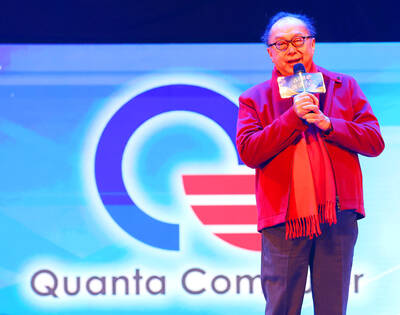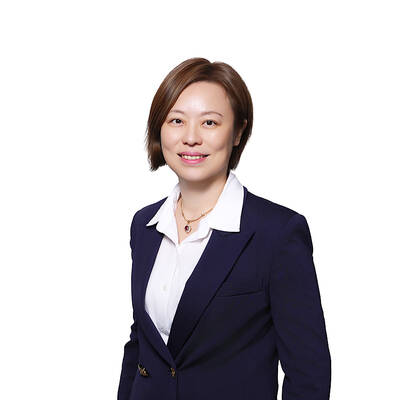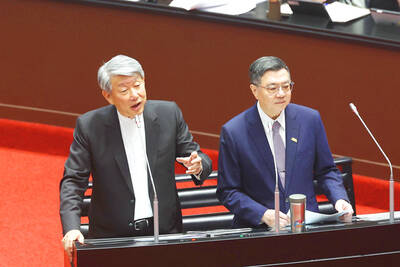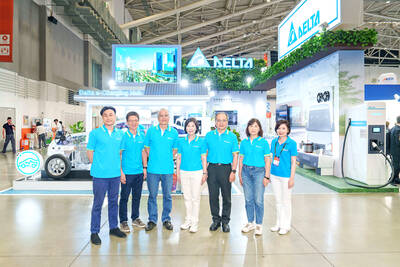Market watchers yesterday had mixed reactions to the rumored buyout by foreign financial institutions of Chinatrust Financial Holding Co (中信金控), the nation's fourth-largest financial group by market value.
"It's possible, as Chinatrust could then bypass the government's regulations to break into the Chinese market," said Shirley Yang (
Analysts say that foreign shareholders -- which control 53 percent of Chinatrust -- are in favor of the sale but cannot reach agreement on an offer of NT$30 (US$0.92) per share from the potential buyers, Yang said.
The Koo family could still retain their control and ownership of Chinatrust after the buyout, which would be similar to the case of US Carlyle Group's buyout attempt of Advanced Semiconductor Engineering Inc (ASE,
However, Sophia Cheng (
The ASE model may prevail in the high-tech sector, but not necessarily in the banking sector whose customers are the mass public, Cheng said.
"The priority for the Koo family is to repair their reputation [after the investment scandal with Mega Financial Holding Co (
It is likely for the Koo family to introduce major foreign investors who can
control some board seats, but not to sell out the whole company, Cheng said.
She also stressed that private equity institutions that want to cash in on
China's banking market can directly target Chinese banks and need not bother
to take over Taiwanese lenders to achieve that end.

Quanta Computer Inc (廣達) chairman Barry Lam (林百里) is expected to share his views about the artificial intelligence (AI) industry’s prospects during his speech at the company’s 37th anniversary ceremony, as AI servers have become a new growth engine for the equipment manufacturing service provider. Lam’s speech is much anticipated, as Quanta has risen as one of the world’s major AI server suppliers. The company reported a 30 percent year-on-year growth in consolidated revenue to NT$1.41 trillion (US$43.35 billion) last year, thanks to fast-growing demand for servers, especially those with AI capabilities. The company told investors in November last year that

Intel Corp has named Tasha Chuang (莊蓓瑜) to lead Intel Taiwan in a bid to reinforce relations between the company and its Taiwanese partners. The appointment of Chuang as general manager for Intel Taiwan takes effect on Thursday, the firm said in a statement yesterday. Chuang is to lead her team in Taiwan to pursue product development and sales growth in an effort to reinforce the company’s ties with its partners and clients, Intel said. Chuang was previously in charge of managing Intel’s ties with leading Taiwanese PC brand Asustek Computer Inc (華碩), which included helping Asustek strengthen its global businesses, the company

Taiwanese suppliers to Taiwan Semiconductor Manufacturing Co. (TSMC, 台積電) are expected to follow the contract chipmaker’s step to invest in the US, but their relocation may be seven to eight years away, Minister of Economic Affairs J.W. Kuo (郭智輝) said yesterday. When asked by opposition Chinese Nationalist Party (KMT) Legislator Niu Hsu-ting (牛煦庭) in the legislature about growing concerns that TSMC’s huge investments in the US will prompt its suppliers to follow suit, Kuo said based on the chipmaker’s current limited production volume, it is unlikely to lead its supply chain to go there for now. “Unless TSMC completes its planned six

Power supply and electronic components maker Delta Electronics Inc (台達電) yesterday said it plans to ship its new 1 megawatt charging systems for electric trucks and buses in the first half of next year at the earliest. The new charging piles, which deliver up to 1 megawatt of charging power, are designed for heavy-duty electric vehicles, and support a maximum current of 1,500 amperes and output of 1,250 volts, Delta said in a news release. “If everything goes smoothly, we could begin shipping those new charging systems as early as in the first half of next year,” a company official said. The new